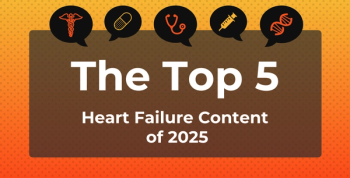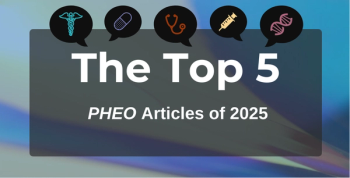
AI-Based Electrocardiogram Interpretation Detects LVSD in Muscular Dystrophy
Key Takeaways
- AI-ECG provides a non-invasive, accessible alternative for detecting LVSD in muscular dystrophy patients, overcoming challenges of routine echocardiography.
- The study showed AI-ECG's high sensitivity and specificity in predicting LVSD, with an AUROC of 0.83 in muscular dystrophy patients.
Artificial intelligence (AI)–based electrocardiogram interpretation (AI-ECG) detected left ventricular systolic dysfunction (LVSD) in patients with muscular dystrophy, a recent study found.
Routine echocardiographic surveillance in adults with muscular dystrophy may uncover early signs of left ventricular systolic dysfunction (LVSD) and prompt timely intervention, but physical limitations can make consistent monitoring a challenge. Artificial intelligence (AI)–based electrocardiogram interpretation (AI-ECG) could offer a noninvasive, accessible alternative to routine echocardiography, according to findings published in the
“Our findings have potential implications for clinical practice. Current guidelines recommend routine echocardiographic monitoring for muscular dystrophy patients, typically on an annual or biannual basis,” the authors wrote. “However, obtaining high-quality echocardiographic images can be challenging due to patient-specific factors such as scoliosis and muscle weakness. Our findings suggest that AI-ECG could serve as a complementary screening tool, potentially allowing for more flexible and patient-friendly monitoring strategies.”
Cardiac complications are substantial contributors to mortality in muscular dystrophies, including
“Given these limitations and the current pressure on echocardiography availability in our health care systems, alternative methods for LVSD risk stratification are urgently needed,” the authors wrote. “[AI] applied to [AI-ECG] has shown promise for predicting LVSD in various populations. An ECG is widely accessible, cost-effective, and quick to perform (also in immobile populations), with the potential for home monitoring applications.”
The researchers identified patients with DMD, Becker muscular dystrophy, limb-girdle muscular dystrophy, or myotonic dystrophy who were 16 years or older and underwent an ECG and transthoracic echocardiogram within 90 days of each other at the University Medical Center Utrecht hospital in the Netherlands between 2007 and 2023. The data pool also included female carriers of DMD or BMD, who are also at a higher risk of cardiac complications.
A convolutional neural network was first trained using a derivation cohort of 53,874 ECG-echocardiogram pairs from 30,978 patients without muscular dystrophy to detect LVSD, then it was tested on a set of 390 ECG-echo pairs from 390 patients with muscular dystrophy. The researchers used a Cox proportional hazards model to determine the predictive value of AI-ECG for new-onset LVSD.
Follow-up echocardiography was available for 177 patients without LVSD at baseline. At a median follow-up of 4.8 (IQR, 2.6-8.6) years, LVSD occurred in 92 (52%) patients. LVSD prevalence ranged from 13.4% in patients with myotonic dystrophy to 81.3% in patients with DMD. No BMD female carriers showed LVSD, but 17.4% of DMD carriers had LVSD.
In the validation set, the model achieved an area under the receiving operator curve (AUROC) of 0.86 (95% CI, 0.85-0.88), sensitivity of 0.90 (95% CI, 0.88-0.92), and specificity of 0.58 (95% CI, 0.56-0.60). In the muscular dystrophy test set, the model demonstrated an AUROC of 0.83 (95% CI, 0.79-0.87), sensitivity of 0.87 (95% CI, 0.81–0.93), and specificity of 0.58 (95% CI, 0.52-0.63). The negative predictive value was 0.91 (95% CI, 0.86-0.95), and the positive predictive value was 0.49 (95% CI, 0.43-0.53).
The model overall showed an AUROC of 0.72 (95% CI, 0.66-0.78) for predicting new-onset LVSD, and the AI-ECG probability was a significant predictor of LVSD occurrence.
Despite the model’s potential, the authors cautioned that timely diagnosis of LVSD and initiation of cardioprotective treatment are crucial. Therefore, AI-ECG must be evaluated in a structured clinical framework to ensure that it improves established monitoring methods rather than replaces them. The clinical utility, cost-effectiveness, and optimal integration of AI-ECG into current care standards must also be determined through prospective studies and cluster randomized trials, they added. Their study was also limited by its single-center nature and reliance on routine clinical interpretation of echocardiograms.
“This study demonstrates that AI-ECG can accurately detect and predict LVSD in muscular dystrophy patients, offering a non-invasive, widely accessible, and applicable tool for cardiac risk stratification,” the authors concluded. “The ability to detect and predict LVSD may enable more personalized follow-up strategies, reducing reliance on echocardiography. Future research should focus on external validation and pediatric application.”
References
1. Arends BKO, Zwetsloot PM, Heeres PS, et al. Left ventricular systolic dysfunction screening in muscular dystrophies using deep learning-based electrocardiogram interpretation. J Electrocardiol. Published online June 12, 2025. doi:10.1016/j.jelectrocard.2025.154048
2. Verhaert D, Richards K, Rafael-Fortney JA, Raman SV. Cardiac involvement in patients with muscular dystrophies: magnetic resonance imaging phenotype and genotypic considerations. Circ Cardiovasc Imaging. 2011;4(1):67-76. doi:10.1161/CIRCIMAGING.110.960740
Newsletter
Stay ahead of policy, cost, and value—subscribe to AJMC for expert insights at the intersection of clinical care and health economics.







































